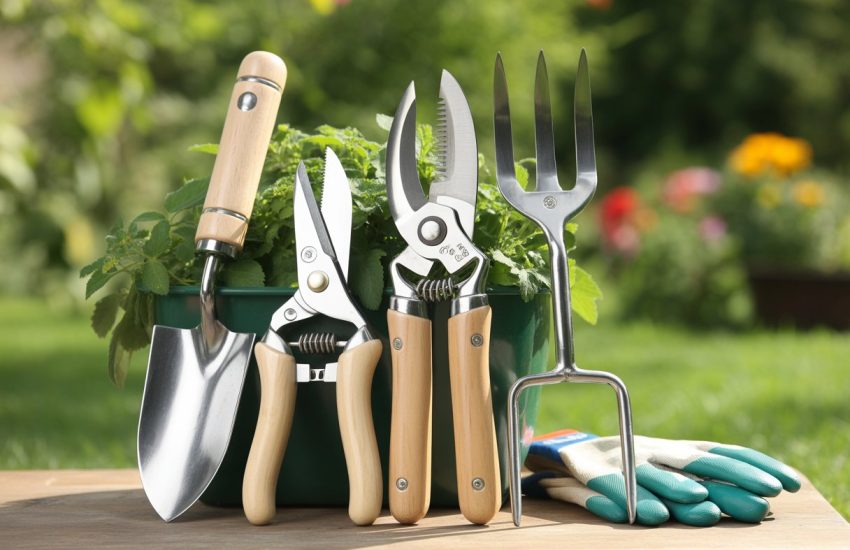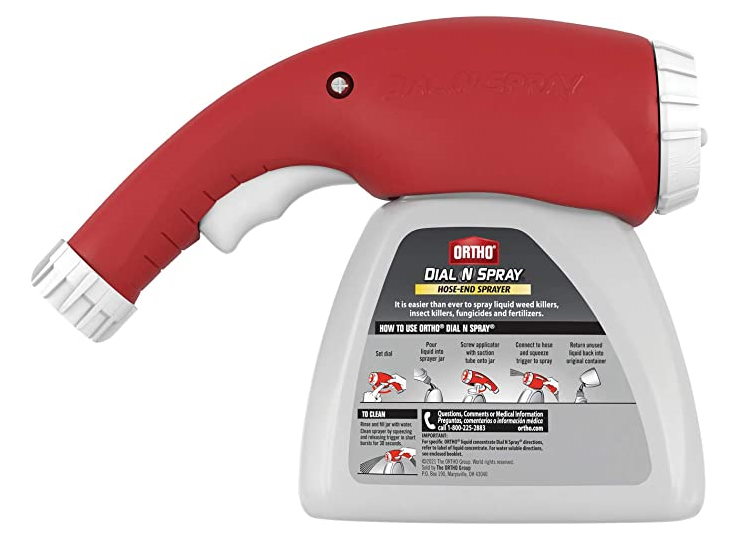Growing Lemongrass in Pots: Tips and Tricks
Lemongrass is a versatile herb that has been used in culinary and medicinal practices for centuries. It is known for its citrusy and earthy flavor, as well as its ability to aid in digestion and reduce inflammation. While lemongrass is commonly grown in tropical climates, it can also be grown in pots for those who live in cooler regions.
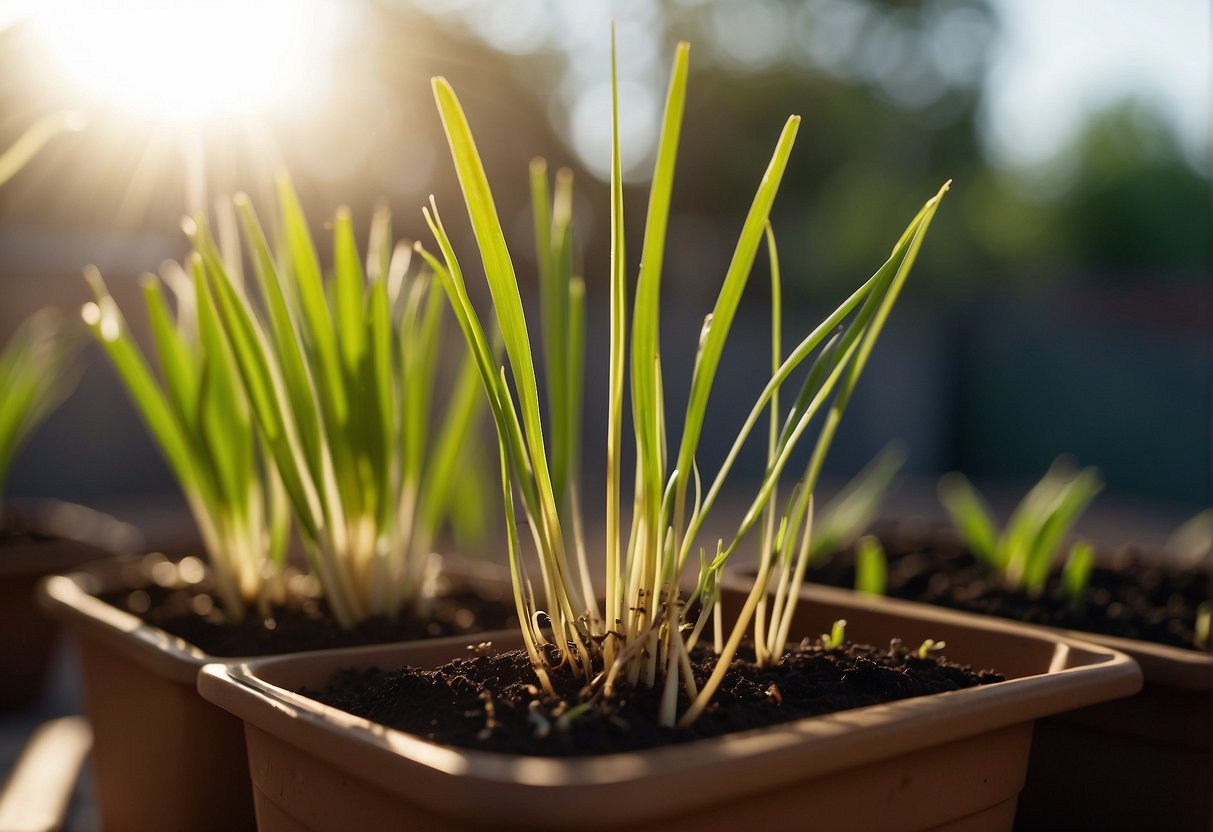
Growing lemongrass in pots is a great option for those who want to enjoy the benefits of this herb without having to worry about the climate. Potted lemongrass can be grown indoors or outdoors, depending on the amount of sunlight it receives. It is also a great way to save space in a small garden or balcony. In this article, we will discuss the steps to successfully grow lemongrass in pots, including the type of pots to use, the soil requirements, and the ideal growing conditions.
Choosing the Right Container
When it comes to growing lemongrass in pots, choosing the right container is crucial. The container should be large enough to accommodate the plant’s root system and provide adequate drainage. Here are some factors to consider when choosing the right container for your lemongrass:
Pot Size and Material
The size of the pot is important when growing lemongrass. A pot that is too small will restrict the growth of the plant, while a pot that is too large can lead to overwatering and root rot. A 12-inch pot is ideal for growing lemongrass.
The material of the pot is also important. Terracotta pots are a popular choice because they are porous and allow air and water to pass through the walls, which helps to prevent overwatering. Plastic pots are also a good option, as they are lightweight and easy to move around.
Drainage Considerations
Proper drainage is essential when growing lemongrass in pots. Without adequate drainage, the roots can become waterlogged and eventually rot. Make sure the pot has drainage holes in the bottom to allow excess water to escape.
To ensure good drainage, place a layer of gravel or small stones at the bottom of the pot before adding soil. This will help to prevent the drainage holes from becoming clogged with soil.
In summary, when choosing a container for growing lemongrass, it is important to consider the size and material of the pot, as well as the drainage capabilities. A 12-inch terracotta or plastic pot with drainage holes is ideal for growing lemongrass in pots.
Soil and Soil Amendments
Potting Mix Selection
When growing lemongrass in pots, selecting the right potting mix is crucial. A high-quality potting mix should be well-draining and rich in organic matter. A mix that is too dense can lead to waterlogged roots and poor growth.
A good potting mix for lemongrass should contain a blend of peat moss, perlite, and vermiculite. These materials provide a balance of moisture retention and drainage. Additionally, adding some sand can help improve drainage.
Improving Drainage and Aeration
To improve drainage and aeration, it is important to add some amendments to the potting mix. One option is to mix in some coarse sand or perlite. This will help create air pockets in the soil, allowing the roots to breathe.
Another option is to add some compost or well-rotted manure. These materials will add organic matter to the soil, improving its structure and water-holding capacity.
Nutrient Content
Lemongrass requires a soil that is rich in nutrients. To ensure that the plants have access to the nutrients they need, it is important to use a potting mix that contains a balanced blend of nutrients.
One option is to use a commercial potting mix that is specifically formulated for herbs or vegetables. These mixes typically contain a balanced blend of nutrients, including nitrogen, phosphorus, and potassium.
Alternatively, you can add some slow-release fertilizer to the potting mix. This will provide a steady supply of nutrients to the plants over time. However, be careful not to over-fertilize, as this can lead to burnt roots and poor growth.
Overall, selecting the right potting mix and adding the appropriate amendments is key to growing healthy and productive lemongrass in pots.
Planting and Propagation
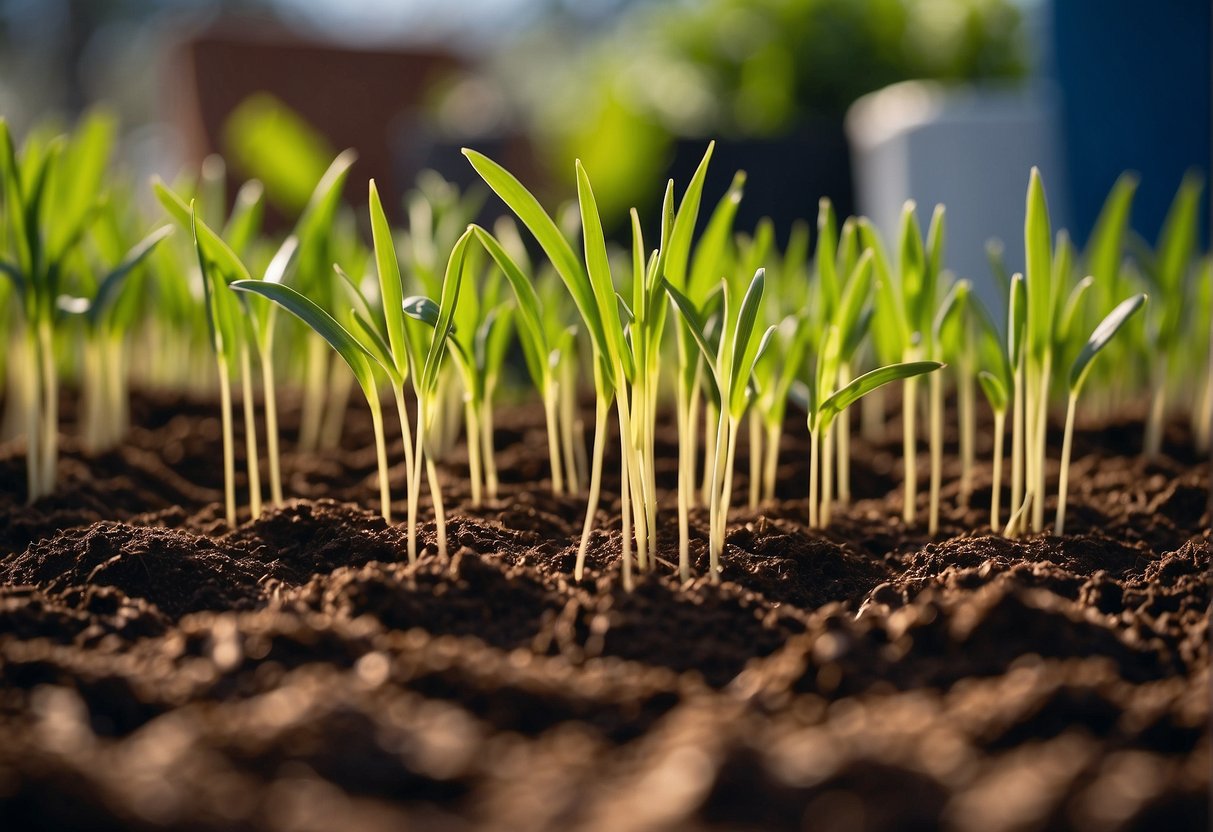
Sowing Seeds or Planting Stalks
Lemongrass can be grown from seeds or stalks. If you are using seeds, sow them in a pot filled with well-draining soil. Cover the seeds with a thin layer of soil and keep the soil moist until the seedlings emerge. Once the seedlings are a few inches tall, thin them out so that each plant has enough space to grow.
If you are using stalks, choose a healthy stalk and cut it into pieces that are about 6 inches long. Plant the stalks in a pot filled with well-draining soil, making sure that the top of the stalk is just above the soil level. Water the soil well and keep it moist until the stalks start to grow.
Using Cuttings for Propagation
Lemongrass can also be propagated from rooted cuttings. To do this, take a healthy stalk and place it in a glass of water. Change the water every few days and wait for roots to grow. Once the roots are a few inches long, plant the cutting in a pot filled with well-draining soil. Water the soil well and keep it moist until the plant starts to grow.
Propagation can also be done through division. To do this, remove the plant from its pot and carefully separate the clumps of grass. Each clump should have a good amount of roots and a few stalks. Plant each clump in a separate pot filled with well-draining soil. Water the soil well and keep it moist until the plants start to grow.
Overall, lemongrass is a relatively easy plant to propagate and grow in pots. With proper care and attention, it can provide a fresh and flavorful addition to any garden or kitchen.
Caring for Lemongrass
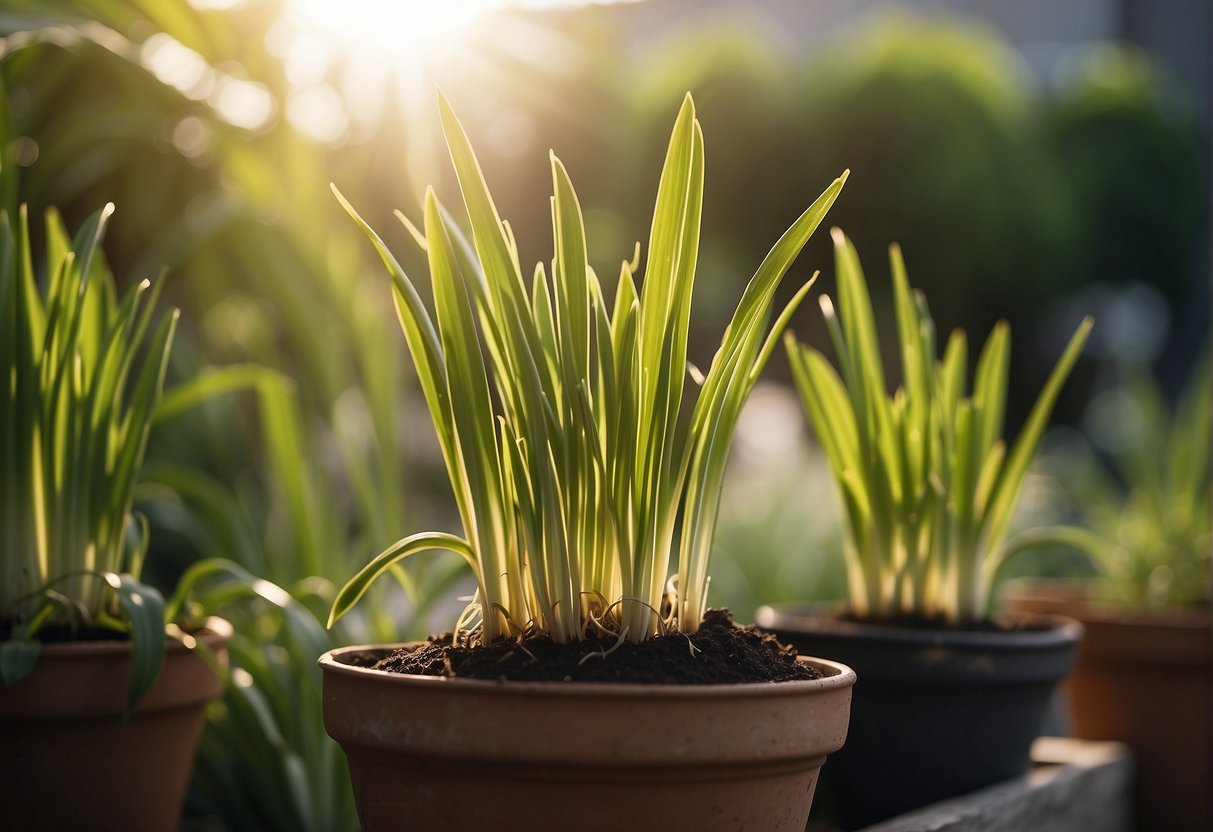
Lemongrass is a low maintenance plant that is easy to grow in pots. However, proper care is essential to ensure that it thrives in an indoor environment. Here are some tips on how to care for your lemongrass plant.
Watering Requirements
Lemongrass requires regular watering, but it is important not to overwater it. Overwatering can lead to root rot, which can be fatal to the plant. The soil should be moist, but not waterlogged. The frequency of watering will depend on the temperature and humidity of the environment. In general, lemongrass should be watered every 2-3 days in warmer weather, and every 4-5 days in cooler weather.
Fertilization and Feeding
Lemongrass is a nitrogen-loving plant, and it requires regular fertilization to grow well. A nitrogen-rich fertilizer or manure tea can be used to feed the plant every 2-3 weeks during the growing season. It is important not to over-fertilize the plant, as this can lead to excessive growth and weak stems.
Pruning and Maintenance
Regular pruning is essential to maintain the health and shape of the lemongrass plant. Dead leaves and stems should be removed regularly to prevent the spread of disease. Pruning can also encourage new growth and increase the yield of the plant. It is important to use sharp, clean shears to prevent damage to the plant.
Lemongrass thrives in full sun and requires at least 6 hours of direct sunlight per day. It is a frost-sensitive plant and should be protected from freezing temperatures. High humidity is beneficial for lemongrass, and it can be grown in a humid environment or misted regularly to increase moisture levels.
In summary, lemongrass is a low maintenance plant that requires regular watering, fertilization, and pruning to thrive in a pot. With proper care, it can be grown successfully indoors and provide a fresh supply of fragrant and flavorful leaves for cooking and tea-making.
Harvesting and Utilization
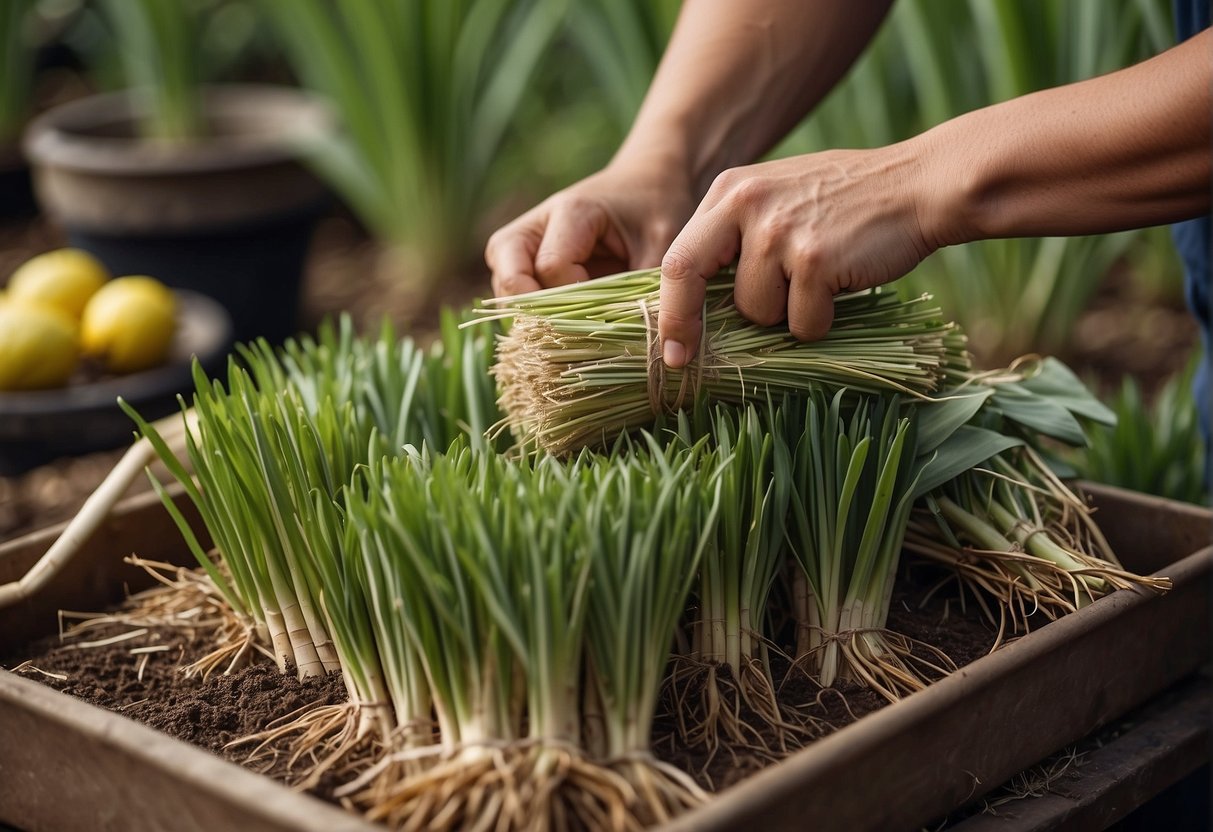
When and How to Harvest
Harvesting lemongrass is a simple process that can be done at any time during the growing season. The best time to harvest lemongrass is when the stalks are about 1/2 inch in diameter and at least 12 inches tall. To harvest, simply cut the stalks at the base of the plant, close to the soil.
When harvesting, it is important to only take what is needed and to leave at least half of the stalks on the plant. This will allow the plant to continue growing and producing more stalks for future harvests.
Storing and Using Lemongrass
Fresh lemongrass can be stored in the refrigerator for up to two weeks. To store, wrap the stalks in a damp paper towel and place them in a plastic bag.
Lemongrass can be used in a variety of dishes, including soups, curries, and stir-fries. It can also be used to make tea and as a flavoring for cocktails. To use lemongrass, remove the outer layers and bruise the stalks with a knife or pestle to release the flavor.
For those who enjoy fresh herbs, growing lemongrass in pots is a great way to have a readily available supply. With a little bit of care and attention, anyone can successfully grow and harvest lemongrass for use in their favorite dishes.
Frequently Asked Questions
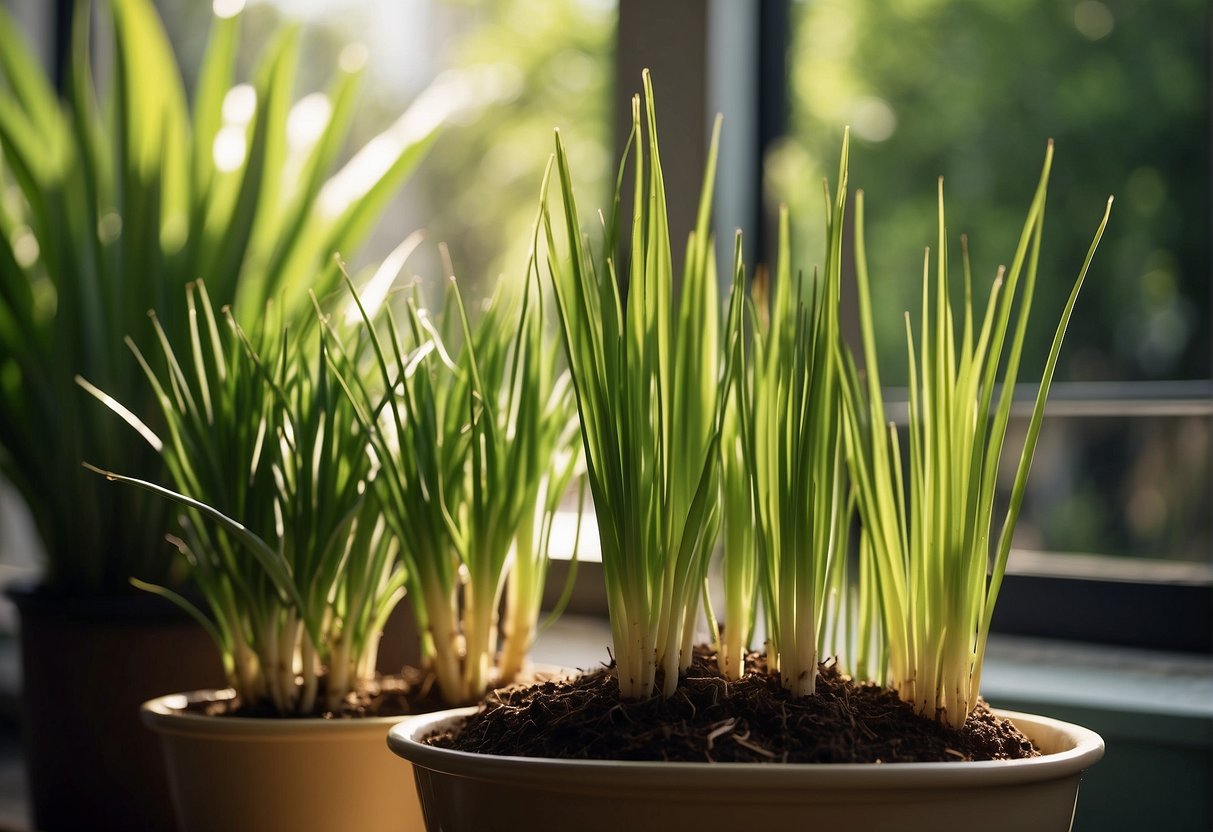
What are the ideal conditions for growing lemongrass in pots?
Lemongrass thrives in warm, humid climates, so it’s important to provide it with plenty of sunlight and moisture. A well-draining potting mix and a container with good drainage are also essential. Lemongrass prefers a slightly acidic soil pH between 6.0 and 7.5.
Can lemongrass be effectively grown indoors, and what are the benefits?
Yes, lemongrass can be grown indoors, provided it receives enough sunlight and warmth. Growing lemongrass indoors allows for year-round harvests and protection from pests and harsh weather conditions. It also adds a refreshing aroma to indoor spaces.
How should lemongrass be cared for during the winter months, especially in colder zones?
Lemongrass is sensitive to frost and cold temperatures, so it’s important to bring it indoors or protect it with frost cloth or a greenhouse in colder zones. Watering should be reduced during the winter months, but the soil should never be allowed to dry out completely.
What steps are involved in propagating lemongrass from seed in containers?
Lemongrass can be propagated from seed or by dividing established clumps. To propagate from seed, sow the seeds in a well-draining potting mix and keep the soil moist. Germination can take up to three weeks. Once the seedlings have grown a few inches tall, they can be transplanted into larger containers.
How quickly can one expect lemongrass to grow in a pot, and what factors influence its growth rate?
Lemongrass can grow up to 3 feet tall in a pot within one season, provided it has plenty of sunlight, warmth, and moisture. Factors that can influence its growth rate include the size of the container, quality of the potting mix, and frequency of watering and fertilization.
Is lemongrass a perennial plant, and will it return after winter in a pot?
Lemongrass is a perennial plant that can survive mild winters in a pot. With proper care, it can regrow from the base in the spring. However, in colder zones, it may be necessary to bring the plant indoors or protect it from frost to ensure its survival.

